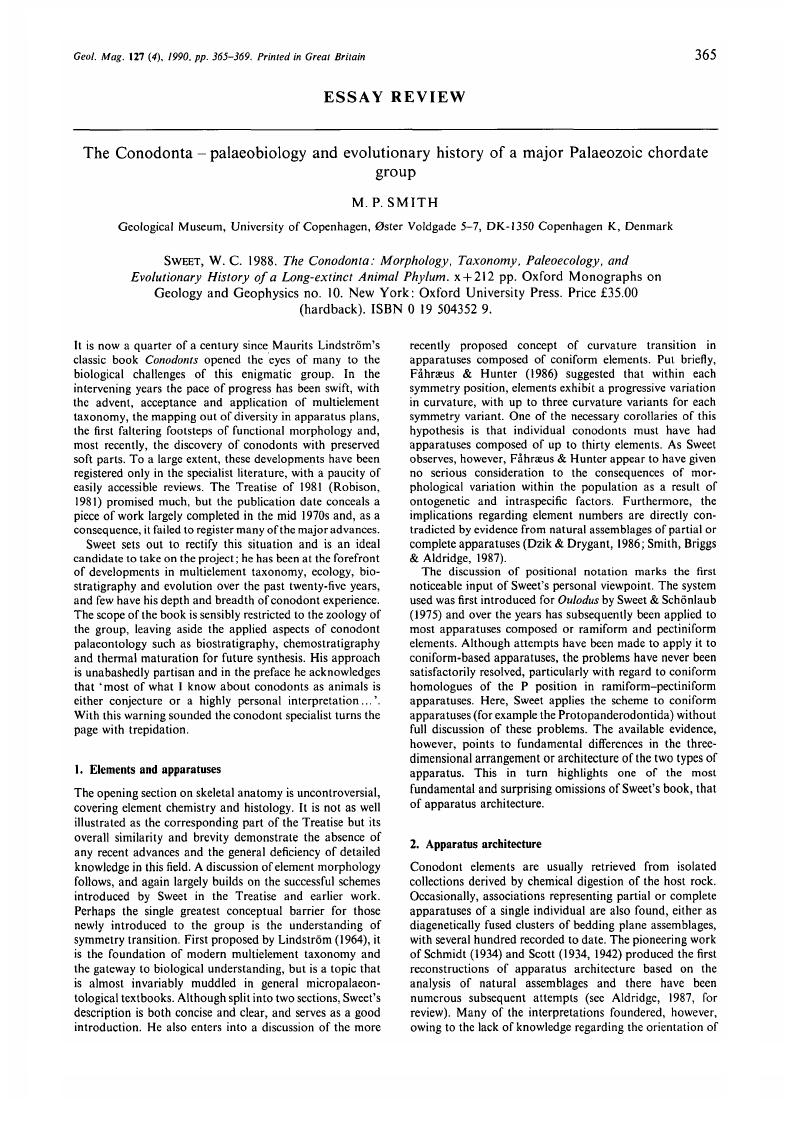Crossref Citations
This article has been cited by the following publications. This list is generated based on data provided by Crossref.
Purnell, Mark A.
and
von Bitter, Peter H.
1992.
Vogelgnathus Norby and Rexroad (Conodonta): new species from the Lower Carboniferous of Atlantic Canada and northern England.
Journal of Paleontology,
Vol. 66,
Issue. 2,
p.
311.
Purnell, Mark A.
1993.
The Kladognathus apparatus (Conodonta, Carboniferous): homologies with ozarkodinids, and the prioniodinid Bauplan.
Journal of Paleontology,
Vol. 67,
Issue. 5,
p.
875.
Smith, Moya M.
and
Hall, Brian K.
1993.
Evolutionary Biology.
p.
387.
1993.
The anatomy of conodonts.
Philosophical Transactions of the Royal Society of London. Series B: Biological Sciences,
Vol. 340,
Issue. 1294,
p.
405.
Donoghue, Philip C. J.
1998.
Growth and patterning in the conodont skeleton.
Philosophical Transactions of the Royal Society of London. Series B: Biological Sciences,
Vol. 353,
Issue. 1368,
p.
633.
Murdock, Duncan J. E.
Smith, M. Paul
and
Sansom, Robert
2021.
Panderodus from the Waukesha Lagerstätte of Wisconsin, USA: a primitive macrophagous vertebrate predator.
Papers in Palaeontology,
Vol. 7,
Issue. 4,
p.
1977.



